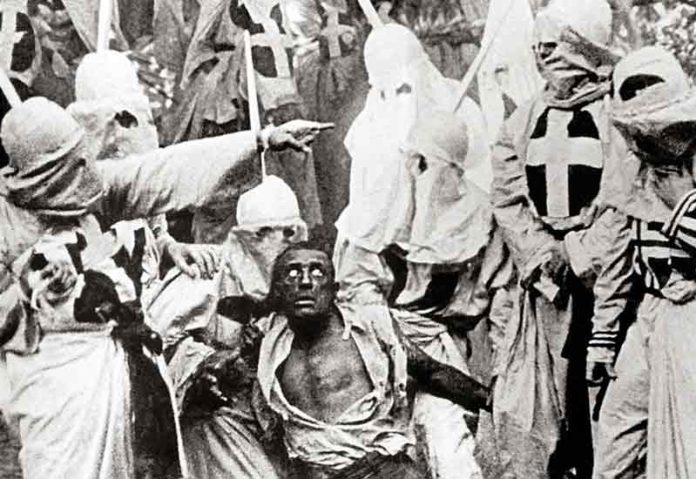 Not many of us visit the Southern states of the USA, except for the theme parks of Florida, but most of us have an impression of what it used to be like in the old days. Our image of the Deep South is often dominated by the History of race relations there, from the days of the Cotton Plantations and Slavery in the 19th Century to the struggle for Civil Rights in the 20th Century. Popular music has played an important part in creating our impression of the Deep South, but the most powerful influence has been Hollywood films. They have had a huge impact, but sadly have all too often given a simplistic and one-sided view of what life was like in the old days.
Not many of us visit the Southern states of the USA, except for the theme parks of Florida, but most of us have an impression of what it used to be like in the old days. Our image of the Deep South is often dominated by the History of race relations there, from the days of the Cotton Plantations and Slavery in the 19th Century to the struggle for Civil Rights in the 20th Century. Popular music has played an important part in creating our impression of the Deep South, but the most powerful influence has been Hollywood films. They have had a huge impact, but sadly have all too often given a simplistic and one-sided view of what life was like in the old days.
One film which was particularly important in creating an image was the silent 1915 classic Birth of a Nation. (This is not to be confused with a recent film with the same title which deals with a famous revolt of the slaves in the USA). The original film, directed by D.W. Griffiths, is hugely important in the History of Cinema, with its cast of thousands and a plot full of drama, romance and action- it was the first Blockbuster. Until then, films had involved small numbers of actors and static sets. It broke all records for numbers watching until Gone with the Wind in 1939. In 1992 it was declared to be so important that it should be preserved forever in the US National Film Registry.
 However the film is notorious. The very title gives away its bias. This is a film about the American Civil War and the events that followed. It portrays the Southern states with their Cotton Plantations and slaves as civilised and cultured, and argues that they were forced by the aggression of the North to try to create their own Nation. They fight nobly and heroically against the vast Union armies. Their women are all young, beautiful and vulnerable, whilst the white men are all heroes.
However the film is notorious. The very title gives away its bias. This is a film about the American Civil War and the events that followed. It portrays the Southern states with their Cotton Plantations and slaves as civilised and cultured, and argues that they were forced by the aggression of the North to try to create their own Nation. They fight nobly and heroically against the vast Union armies. Their women are all young, beautiful and vulnerable, whilst the white men are all heroes.
By contrast the portrayal of Black people is appallingly racist. The black Americans were happy and loyal as slaves (an image repeated in Gone with the Wind) but when given their freedom prove to be greedy, violent and stupid but cowards as well. To protect their women and their civilisation, the white men are forced to create the Ku Klux Klan to keep the violent black thugs in check.
To make the film more dramatic, Griffith showed the KKK dressed in white robes and hats. Large numbers of KKK ride into town to clean them up. Of course the real Ku Klux Klan did terrorise Black people in the South after the Civil War, but they operated in small groups and wore home-made masks. They had no uniform- that was Griffith’s invention to make them look distinctive.
Despite being historically biased and unreliable, the film had a huge impact. President Wilson watched it in the White House (it was the first film ever shown there) and declared it to be “the truth”. Having been given the seal of approval by the President himself- and Wilson had himself been a historian before going into politics- millions of Americans also assumed it must be true.
The original KKK had collapsed in the 1870s, and it is no coincidence that it revived in the same year as the film came out. The new KKK- which now preached hatred against Jews, Catholics and Communists as well as Black people- quickly grew until it boasted more than 1 million members. The new KKK started wearing the white robes which Griffith had made popular. Life was now imitating art in the USA.
 This “second KKK” collapsed after 15 years, only to be revived yet again in the 1950s when the Civil Rights Movement began to threaten white supremacy in the Southern states. The KKK still exists today, although its membership is tiny compared to the old days. They no longer wear white robes, burn crosses or lynch black people, but their message of hate and segregation continues.
This “second KKK” collapsed after 15 years, only to be revived yet again in the 1950s when the Civil Rights Movement began to threaten white supremacy in the Southern states. The KKK still exists today, although its membership is tiny compared to the old days. They no longer wear white robes, burn crosses or lynch black people, but their message of hate and segregation continues.
D.W. Griffith’s film is very rarely shown today. By modern standards it is crude, simplistic, too long (it runs for 3 hours) and with a deeply offensive message. But in its time it was hugely influential and caused the revival of the KKK.
The moral seems to be: don’t believe everything that Hollywood tells us about History










